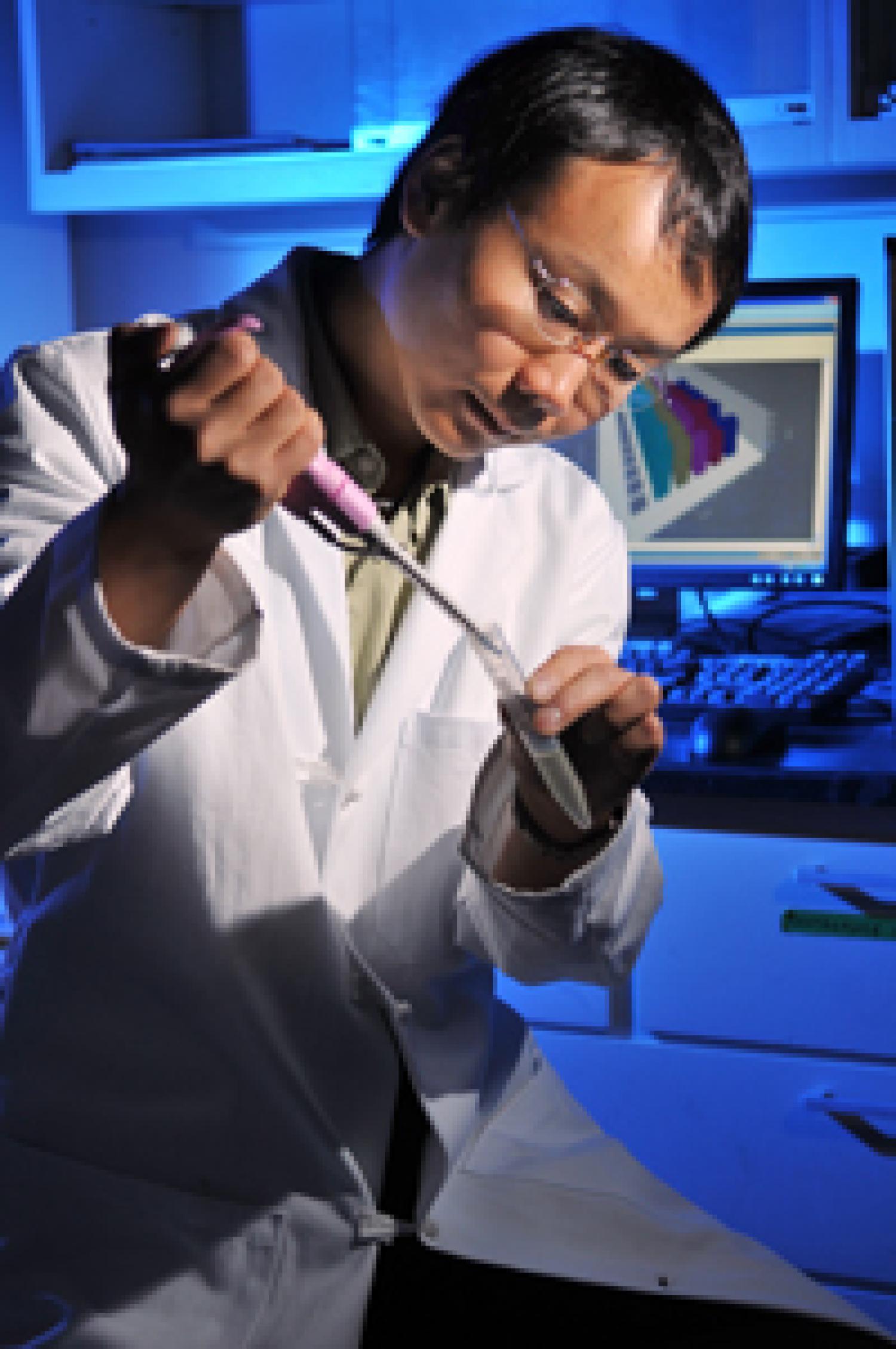Biomarkers light the way to cancer diagnosis

Biomarkers light the way to cancer diagnosis
In an 18-year study released this summer by the National Cancer Institute, widespread screening for ovarian cancer was found to be ineffective in catching the disease. In fact, the screening often did more harm than good, leading women to unnecessary surgery and the complications that often come with it.
Similar issues have been raised about annual mammography screenings increasing breast cancer risk in women with a predisposition to the disease. The low-dose radiation used in the screening ratcheted up the susceptibility to cancer for women who were already at a higher risk—the women who need the screenings the most. Biofrontiers scientist, Hubert Yin, is on the hunt for a better way to find cancer early, without harming patients in the process.
Hubert, an assistant professor in chemistry and biochemistry, is studying biomarkers, which are traceable substances that allow scientists to track a process within the body. Using a biomarker is like tying a balloon to a friend moving through a crowd. Because you can see the balloon above the crowd, you are easily able to locate your friend. In Hubert’s experiments, the balloons are fluorescent molecules called a fluorophores, which chemically attach themselves to cells that indicate cancer is present, glowing so they can be seen and tracked.
Microvesicles are the objects of the fluorophores’ chemical spotlight. They are shed from the surface of cells and can actually help the spread and release of metastatic cancer cells. The presence of microvesicles is a key indicator that cancer is at work, and fortunately, they are easy to find in a simple blood or urine sample. Once Hubert chemically attaches fluorophores to these microvesicles, screening someone for cancer becomes as easy as looking for the glow. A lack of microvesicles means there is nothing for the fluorophores to attach to, which means they don’t glow. And no glow means no cancer.
“This is a great diagnostic concept,” he says. “Biomarkers like fluorophores give us efficient, non-invasive ways to detect cancer before it is diagnosed and after it is treated. Being a smaller, research focused organization gives us an advantage over big pharmaceutical companies when it comes to designing biomedical solutions. It is easier for us to collaborate across labs, and to innovative methods that lead us in the direction of new ways of treating cancer.”
Related content

